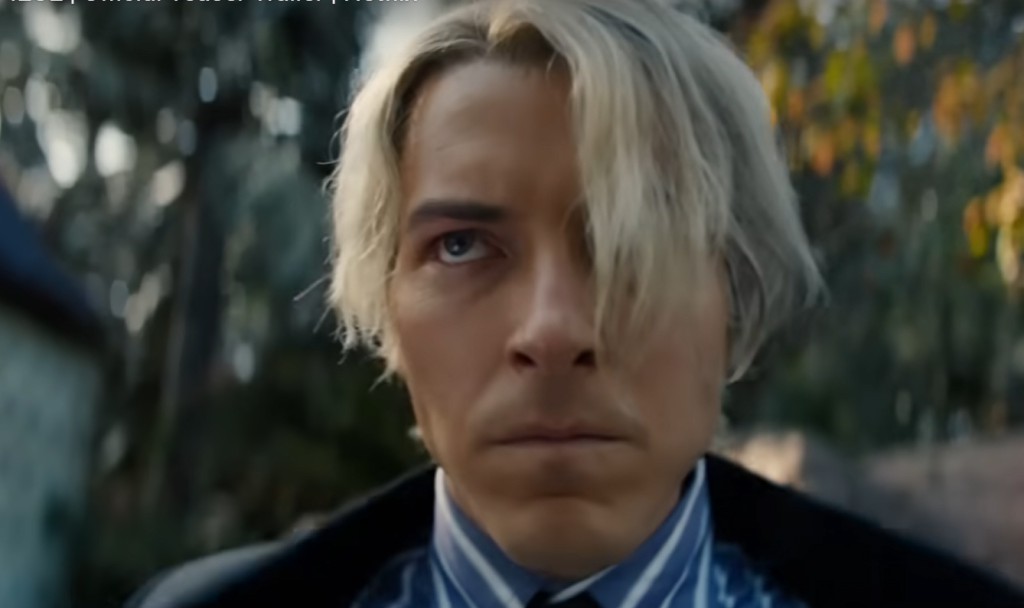Warning: The following content contains spoilers for the “Arlong Park” arc in One Piece.
Live-action adaptations of beloved anime have historically been met with disappointment, like mixing peanut butter with a Duracell battery. However, despite the track record, a new live-action adaptation of the iconic and best-selling One Piece series by Eiichiro Oda is in the works. Unsurprisingly, this endeavor has faced considerable criticism. With the recent release of the first official teaser, more opinions are bound to emerge.
One Piece, disguised as a story about a goofy protagonist, delves into a vast array of plot points, intricate world-building, and political subtext. Naturally, it raises numerous questions. Will Oda’s reported involvement make a difference in this live-action attempt? How will the protagonist’s unique rubber powers be portrayed? And most importantly, how mouthwatering will Sanji’s culinary creations look?
These questions hold significant importance and will be answered soon when the series starts streaming on Netflix from August 31 onwards. However, as an avid One Piece fan, the primary concern for this writer (that’s me, the one you’re currently reading) revolves around the successful translation of the Arlong Park arc.
The Arlong Park arc focuses on Nami, the navigator of the Straw Hat crew (played by Emily Rudd in the live-action adaptation). Initially shrouded in secrecy, Nami’s backstory is illuminated, introducing us to a formidable group of fishmen led by a character named Arlong.
Arlong, known for his menacing appearance, is infamous for his mistreatment of Nami. Exploiting her skills as a navigator and threatening to harm her village, he forces her to work for him. Arlong claims that only by amassing an exorbitant amount of money can Nami secure the freedom of herself and her village.
For myself and countless other One Piece fans, the Arlong Park arc is a true gem. Online, you’ll frequently encounter questions—or even jokes from those skeptical about the series—asking when it “gets good.” I’ve always found this question to be uninformed and lacking understanding.

The initial stages of One Piece, while still containing violence, are primarily presented as a lighthearted and whimsical adventure with an eclectic crew. Even the protagonist’s name, Monkey D. Luffy, the future pirate king, exudes a sense of playfulness. Luffy and his comrades navigate through humorous encounters with outrageously villainous characters, creating an exhilarating experience. Witnessing a stretchy young man passionately rant about food, a sniper with an oversized nose trembling in fear at every opportunity, or a swordsman with green hair constantly getting lost for no apparent reason filled me with pure joy.
Therefore, it’s not a matter of when the series “gets good,” but rather when it begins to deepen and expand its narrative. In my opinion, that pivotal moment occurs during the Arlong Park arc. It stands out as exceptionally brutal compared to everything that came before, and Nami’s backstory remains one of the most profoundly tragic among all the characters in the series. The reasons behind her near-obsession with money, her fondness for oranges, and the fate of her adoptive mother all strike a deep emotional chord.
Additionally, this arc provides one of the earliest glimpses into the corruption within the World Government. It introduces the notion that many wicked pirates, such as Arlong and his fishmen crew, are able to freely act as they please due to the government’s deliberate inaction, which helps maintain the existing power dynamics.
All these elements culminate in an epic battle, as is often the case in Shounen anime. However, what truly makes the entire ordeal unforgettable is Luffy’s decision to heed Nami’s plea for assistance. Witnessing Luffy handing over his cherished hat, the sole possession he values, moved me to tears while simultaneously filling me with an overwhelming surge of excitement, as if I were ready to crash through a solid brick wall.
The story of Arlong extends beyond the Arlong Park arc, as it resurfaces in later arcs such as Sabaody Archipelago and Fishman Island, which delve further into the struggles faced by the fishmen species. In many ways, the fishmen serve as an allegory for the discrimination prevalent in our society, similar to how mutants are portrayed in Marvel comics.

It will be particularly intriguing to see how the show handles these themes, especially considering the actor playing Arlong, McKinley Belcher III, is Black. In the anime and manga, the hardships faced by fishmen are not immediately apparent and are revealed gradually. If the show fails to handle this aspect properly and portrays Arlong as a one-dimensional evil character without exploring his motivations, it could create a problematic situation and impact the show’s optics. Successfully capturing the essence of the arc, not just for Nami’s character development but also for Arlong and the underlying subtext of the fishmen, will be crucial in determining the series’ success.
While I am uncertain about the quality of Netflix’s One Piece adaptation, historical examples do raise concerns. Merely having a substantial budget akin to Game of Thrones does not guarantee success, as demonstrated by The Flash. It remains to be seen if this adaptation will be a disastrous misstep by the studio attempting to capture a massive fandom from a completely different storytelling medium.
However, my faith in human creativity continues to grow. One Piece holds an incredibly special place in the hearts of millions, including myself, and it seems that the cast and crew share the same sentiment. Eventually, someone will find the right formula. Someone will discover how to execute a proper anime adaptation, just as they did with comic books or even Dune, among others.
At the very least, the journey of exploration and discovery will provide us with ample material for discussion. Venturing into the unknown is one of the many elements that define the spirit of One Piece.
Netflix’s One Piece is set to premiere on August 31.
